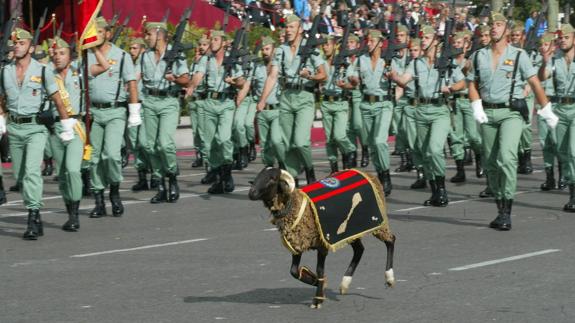20 September 1920: The birth of a military elite
The Legion, originally created to serve in Morocco, now has a base in Ronda and continues to play a popular role in Malaga's Semana Santa
CHARLOTTE WAY
Viernes, 20 de septiembre 2019, 10:44
On 20 September 1920, La Legión Española was officially founded, admitting its first recruit after its formation by royal decree earlier that year.
The Legion, originally known as the Tercio de Extranjeros (Foreign Regiment), was created to serve in North Africa against Rif leader Abd el-Krim, yet proceeded to play a crucial role in the Spanish Civil War on the rebel side, and, more recently, has been involved in operations in Iraq, Afghanistan and Southern Lebanon.
Francisco Franco served as commander of the Legion from 1923 to 1935, and, while post-Francoist Spain has brought about certain changes, such as the obsolescence of the motto '¡Viva la muerte!' (Long live death!), other aspects remain staunchly the same. Uniforms continue to be distinctly elementary, with the red tassel hanging from the cap being their most singular feature.
It is common for animals to be embraced as military mascots, and the Spanish Legion is no exception, sporting a menagerie of mascots over the years. Monkeys, Saharan gazelles, parrots and bears have all formed part of the military zoo, yet it is interestingly the goat, dressed up to the nines in a decadent coat and cap at formal occasions, which has been firmly adopted in modern times.
Bravery characterises the Spanish Legion, and the importance of courage in the face of death is underscored throughout the Legion's creed: soldiers live by the mantra that death is the highest honour possible in combat, and that "llega sin dolor" (it arrives without pain). In the same vein, while La Canción del Legionario remains the Legion's official anthem to this day, it is El Novio de la Muerte (The Bridegroom of Death), composed by Juan Costa, which resonates during the Legion's solemn marches.
It is this same intrepidity which fuels the annual 101km challenge organised by the military division in Ronda. Started in 1995, the extreme test of strength, determination and camaraderie, in which participants must cover the route running through Malaga province in under 24 hours, has now become a hotly anticipated tradition, with more than 7,000 soldiers and members of the public competing in 2019.
The Spanish Legion's connections to Andalucía extend further, however, and a brigade of soldiers continues to be based in Ronda, sending out legionnaires to march each year in a Semana Santa procession in Malaga, carrying a Cristo de la Buena Muerte (Christ of the Good Death) effigy.
